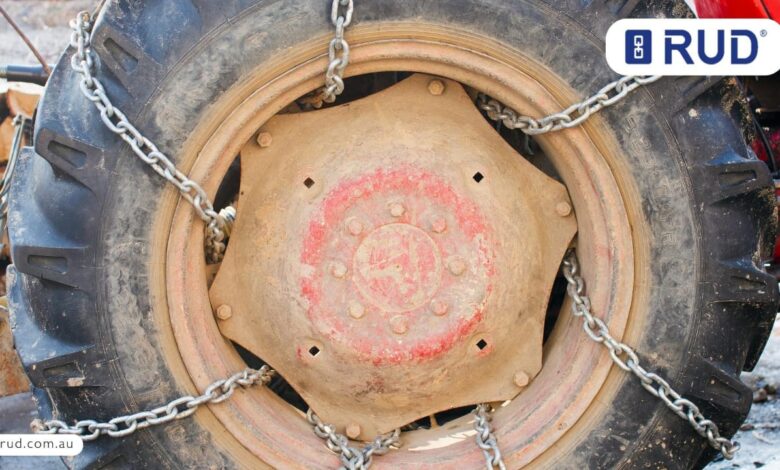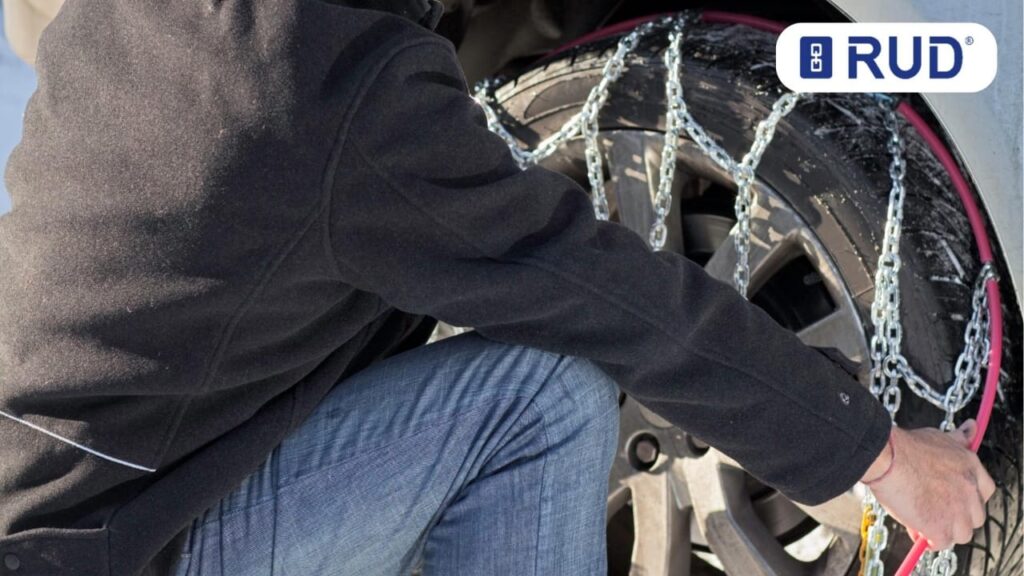Can Tyre Protection Chains Be Reused? What You Need to Know

Tyre protection chains do a tough job. After months of grinding through rock, heat and debris, they start to show their age. That leaves you with one question. Can you reuse them?
If you’re a mine site manager, you’ve probably faced this dilemma already. Replacing chains too early wastes money, but reusing them without proper checks puts tyres, equipment and workers at risk. The right answer depends on what you’re seeing in the chains and how you plan to manage them.
This article will show you how to make smarter decisions about chain reuse. You’ll learn when refurbishment is worth it, how to spot real wear, and why regular inspections matter. We’ll also explain how a trusted provider like RUD Australia helps businesses get more out of every set of chains.
If you’re trying to reduce costs without cutting corners, this guide is for you. Let’s get into it.
Why don’t tyre protection chains have a set expiry date?
Tyre protection chains don’t have an expiry date because they are made from steel, not rubber. Unlike tyre rubber, which naturally degrades with exposure to heat, UV and oxidation, steel chains are less affected by age. Their condition depends on how they’re used, not how long they’ve existed.
That means a chain that’s been in service for a year in harsh conditions could be in worse shape than a chain that’s five years old but lightly used. The key factor is wear, not time.
Several things influence how long a tyre protection chain will last:
- Ground conditions like sharp rocks or abrasive surfaces
- Load stress from carrying heavy materials
- How often were they maintained and inspected
- Chain quality, such as that from RUD Australia, which is built for durability
If you’re having trouble keeping track of when and how chains are used, this equipment inspection checklist can help you log hours, surface types and repairs.
Understanding these variables gives you more control. You can reuse chains confidently, avoid premature replacements, and reduce the risk of failure in the field.
Reuse vs replacement: how to tell the difference
Not every worn chain needs to be replaced. In many cases, reuse is not only possible but practical. The trick is knowing how to assess the condition before making the call.
If your chain shows localised wear, minor stretching or cosmetic damage, it may still be a strong candidate for reuse. Structural issues across multiple links or signs of heavy deformation are clearer signs that it’s time to replace.
Here’s what to look for:
- Surface-level wear, such as link abrasion or thinning
- Loose or damaged fasteners that can be replaced
- Bending or twisting in individual links
- Consistent performance issues over time
Chains from high-end manufacturers like RUD Australia are often built with refurbishability in mind. That means you can repair or realign certain components and safely get more operational hours from the chain.

A case study from a mine site in Central Queensland showed that by refurbishing and reusing tyre chains just twice, they cut replacement costs by over $50,000 in a single year. The secret to this financial saving was regular inspections and working with a supplier that supported refurbishment planning.
If your maintenance team knows what to look for, you’ll save money and avoid throwing away usable steel.
How to maintain tyre protection chains for longer life
Tyre protection chains can last a lot longer if you look after them properly. Skipping maintenance doesn’t just wear them out faster, it puts your tyres and equipment at risk.
Inspections don’t need to be complicated, but they do need to be consistent. Regular checks let you catch early signs of damage and plan repairs before things go wrong.
Here is a list of what to include in your maintenance routine:
- Inspect links and fasteners for signs of wear, cracking, or corrosion
- Check chain tension to avoid slippage or uneven loading
- Remove debris and build-up that can accelerate metal fatigue

- Log hours and surfaces to track how conditions are affecting wear
- Store chains in a dry, secure area to prevent rust when not in use
If you’re having trouble tracking chain condition across multiple machines, consider using a printed or digital logbook to record hours worked, surface types and repair notes. It’s a simple step that can help you avoid unnecessary replacements.
How to tell if your tyre protection chains are worn out
Every chain reaches a point where reuse or refurbishment is no longer safe. Knowing when to retire a chain protects your equipment, your team, and your bottom line.
Chains that have served their time will usually show clear warning signs. Ignoring them can lead to breakdowns, tyre failure or even safety incidents onsite.
So, what tells you that a chain is done?
- Cracks that run deep across multiple links
- Links that have stretched or warped beyond tolerance
- Repeated repairs in the same areas
- Chain movement that’s no longer consistent or controllable
- Visible gaps in tyre coverage
Holding onto chains past their safe limit doesn’t save money in the long run. It creates risks you can avoid with routine assessments and retirement planning.
If you’re not already recycling old steel chains, it’s worth considering. Many scrap metal services offer rebates, and it’s a more sustainable way to handle end-of-life equipment.
A simple rule: if you wouldn’t trust the chain to protect a new tyre, it’s time to let it go.
Make smarter decisions for longer-lasting chains
The best chain programs are built on clear inspection habits, regular maintenance, and smart reuse. That’s how you save money, protect equipment, and avoid unnecessary downtime.
If your chains are overdue for review, now is the time to take care of them. For expert support, visit RUD Australia.
Also Read: How To Lower Your Car’s Running Costs?




